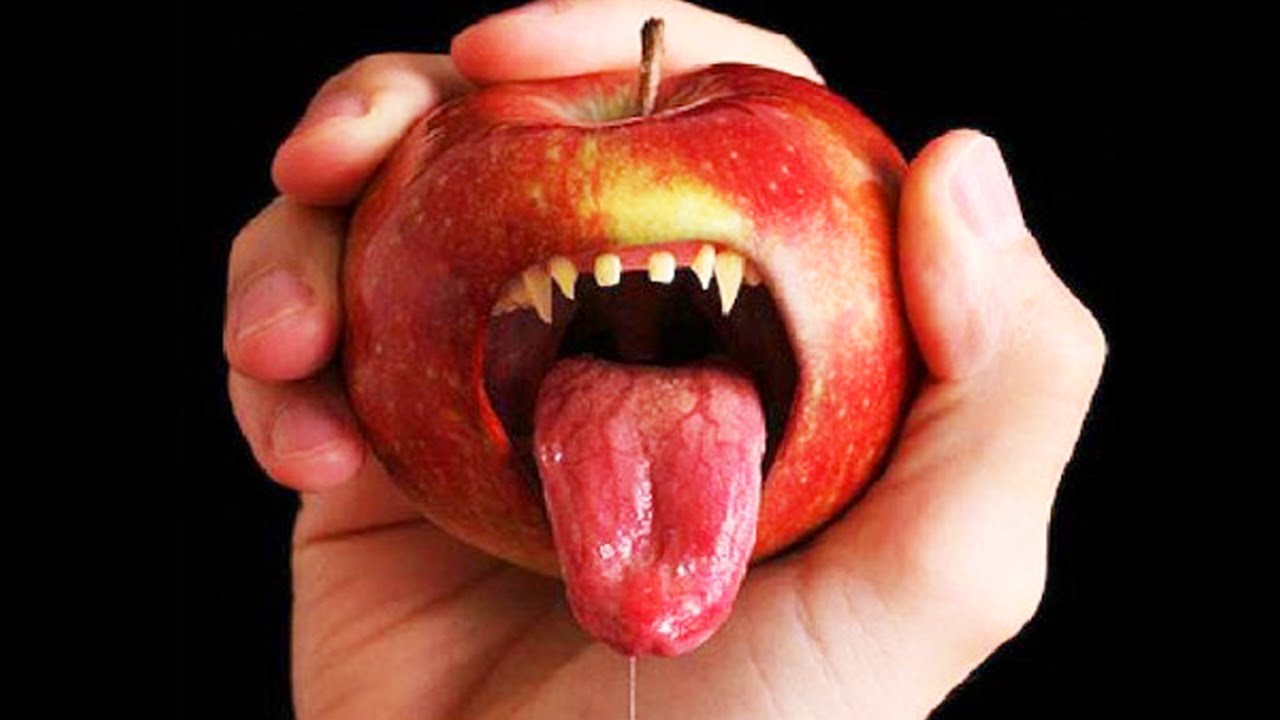Many of the foods that you eat regularly have lots of different varieties, but eat the wrong one and it could kill you.
Even if you’ve eaten mushrooms, fish, or even cheese, you’ve probably noticed that there are many different varieties of each. But what you probably didn’t know is that depending on where you are, some places sell those foods that are actually highly toxic to certain people.
So you might want to pay attention to what’s on this list
1. Death cap mushrooms
There’s an estimated 10,000 different types of mushrooms in North America alone.
So unless you’re an expert, you may want to rethink your chances of properly telling apart the edible ones from the poisonous ones out in the wild.
The death cap is one of the most poisonous mushrooms in the northern hemisphere. It grows throughout the entire temperate zone of Europe, Asia and North Africa. This amanita is responsible for most mushroom poisonings, and even small doses can be very dangerous.

The poison – amanitin, damages the liver and kidneys. Initial symptoms occur 8 to 48 hours after ingestion. In this phase, the person experiences fatigue, stomach nausea, dizziness, headaches and feelings of cold, even freezing. The nausea intensifies, stomach aches occur, accompanied by strong retching and watery diarrhea, leading to dehydration, and eventual circulatory failure.
This is usually the immediate cause of death in children. If the patient survives this phase, his condition appears to improve (usually the fourth day after ingestion). In the second phase, the kidneys fail, and sometimes the liver as well. Death usually occurs four to twelve days after ingestion.
2. Hakarl
One’s man’s trash is another man’s treasure. This is perhaps never more than case than with one unforgettable dish in traditional Icelandic cuisine, the decomposed shark carcass known as “hákarl”. Hakarl is incredibly poisonous, but thanks to some preparation methods handed down by the vikings, this nasty, toxic fish can be made edible.
All you have to do is gut it, chop off its head, toss it in a shallow hole in the ground, cover it with rocks and sand, and leave it there for like, six to 12 weeks wile it ferments in its own seeped out urine. Then after a couple of months, you got a meal, but if you skip those steps, or prepared incorrectly, you could easily get poisoned.

“The single worst, most disgusting and terrible tasting thing” -Chef Anthony Bourdain
3. Fugu
One fish, two fish, blowfish, dead person.
An estimated 30 to 50 people every year fall victim to one of the most deadly foods in the world. And basically every one of them is doing so with full knowledge of the danger that they face. Fugu, better known as the pufferfish or blowfish, is considered a delicacy in Japan. The problem is though, a single fish contains enough poison to kill 30 adults with no known antidote.
The toxins contains 1,200 times stronger than cyanide. It paralyzes those who are brave or foolish enough to consume it while they stay fully conscious and die from asphyxiation.

Chefs have to undergo at least 3 years of specialized training to be qualified to prepare the fish properly, which involves removing the creature’s most toxic organ, the liver, and such expertise raises the price of a fugu dish to up to $200. But this hasn’t stopped the Japanese — about 40 kinds of fugu are caught in Japan, and people consume 10,000 tons of the fish every year.
“The single worst, most disgusting and terrible tasting thing” -Chef Anthony Bourdain
4. Atropa Belladonna
Belladonna means beautiful woman in Italian but sadly, it’s also the name of one of the most poisonous plants on the planet. Known as the devil’s berries or deadly nightshade, belladonna is found in Europe, North Africa and West Asia. Both the leaves and the berries are extremely toxic and contain tropane alkaloids which cause hallucinations and delirium. It only takes about 10 tiny berries to kill a full grown adult.
All parts of the plant contain tropane alkaloids. Roots have up to 1.3%, leaves 1.2%, stalks 0.65%, flowers 0.6%, ripe berries 0.7%, and seeds 0.4% tropane alkaloids; leaves reach maximal alkaloid content when the plant is budding and flowering, roots are most poisonous in the end of the plant’s vegetation period.

5. Sannakji
The choking octopi is considered a Korean delicacy, and could kill an adult in a much faster and creepier way. The tentacles of the octopi are served raw immediately after being cut from the body of the animal and, like a chicken with its head cut off, residual nerve activity keeps the tentacles twitching.
As the suction pads maintain suction after being severed, the challenge is for the customer to chew the tentacles up before they stick to the roof of the mouth. If this is not done successfully, the outcome is far from entertaining.

The tentacles that stick to the mouth and throat can actually cause the customer to choke to death and there lies the danger in this deadly game.
Approximately six people every single year in South Korea die from this, many of whom are men who believe that consuming it will actually boost their strenght and sex drive.
6. Ackee Fruit
If you’ve ever been to Jamaica, you may have tried their national fruit, ackee. It’s actually one half of their national dish ackee and salt fish which in September of 2011 actually ranked second in a survey that National Geographic conducted of the best national dishes.
Ackee contains hypoglycin which causes blood sugar to drop at fatal levels. If the unripened or untreated fruit is eatin, you can fall victim to Jamaica vomiting sickness, which involves seizures and lethal hypoglycemia. Once open, the only edible portion is the yellow arilli, which surround always-toxic black seeds. In 2011, 23 people were confirmed to have died and another 194 were suspected of having been poisoned after consuming the ackee fruit.

7. Giant Namibian Bullfrogs
Giant bullfrogs are a delicacy in Namibia and can be upwards of 9 inches long and weigh over a pound. Since they’re virtually indistinguishable from many more edible frogs, these amphibians pose a real danger to those who crave frog meat. They’re usually only found on the black market, not only because they’re endangered but also because they’re highly toxic.
The majority of the bullfrog is poisonous to humans, including its skin, tongue, and most organs, and eating one can cause kidney failure. Young adults males who have not yet mated are considered to be the most dangerous.

8. Casu Marzu Cheese
Casu Marzu is the sardinian name for maggot cheese. This Italian sheep’s milk specialty is made by removing the rind and leaving it outside so that cheese flies will lay their eggs inside it. As many as 500 eggs are added to this dairy product at any one time. Once the larvae hatch, they eat, digest, and excrete the cheese from inside.
It’s the acid from this process that makes the cheese soft and ready to eat.

The thing is, you have to eat it when the maggots are still alive and squirming because dead ones are highly toxic and yes, can kill you. What’s worse is that if you don’t chew them properly, living maggots will turn your innards and might be their next home.
So basically you’re eating maggot poop.
9. English Yew
Found in Southern parts of Europe, Southwest Asia, and Northwest Africa, Taxus baccata, or better known as English Yew, is a coniferous tree with bright red berries. A popular choice in landscaping designs, they’re useful for creating ornamental topiaries and formal hedges.
But beyond the wondrous beauty of these evergreen trees lies a murderous plant ready to sap you of your life. Every single part of this evergreen is highly toxic to humans with the strange exception of its berries. Even with all that we know today, people still risk their lives and eat them. The seeds inside these very edible berries are just as toxic as the rest of the tree, so they must be prepared properly with the seeds inside the berrie removed.

If you ingest even one seed, you could experience increased heart rate, convulsions, muscle tremors, and cardiac arrest before ultimately dying. Even scarier, you experience no symptoms at all and still be dead within a few hours.
10. Water Hemlock
Hemlock is the one of the most lethal plants in the world and is considered to be the most poisonous plant in North America. History shows that it was a particular favorite in Ancient Greece, most notably being responsible for the death of Socrates.
A perennial plant that grows to a height of 3 to 7 feet tall. The leaves are up to 15 inches long, alternately-arranged, and tri-pinnately-compound with numerous 2 to 5 inch ovate leaflets. They are also sharply toothed. The leaf veins terminate at the bottom of leaf serrations and not at the tips, which helps to identify this plant. What makes water hemlock so dangerous is that the fresh root, the most toxic part of the plant, strongly resembles a parsnip.

But unlike parsnips, water hemlocks contains cicutoxin, a neurotoxin that overstimulates the central nervous system, causing nausea, breathing problems, kidney failure, seizures, and soon after ingestion, death.
Historically, it is said that some Native American tribes once used hemlock to poison tips of arrows for hunting purposes.
Sources:
travelandleisure
thefw.com
dailymail.co.uk
earthexcursion
wikipedia
CTTO to the images used




















Hey very nice site!! Man .. Beautiful .. Amazing .. I will bookmark your web site and take the feeds also厈I am happy to find so many useful information here in the post, we need develop more techniques in this regard, thanks for sharing. . . . . .